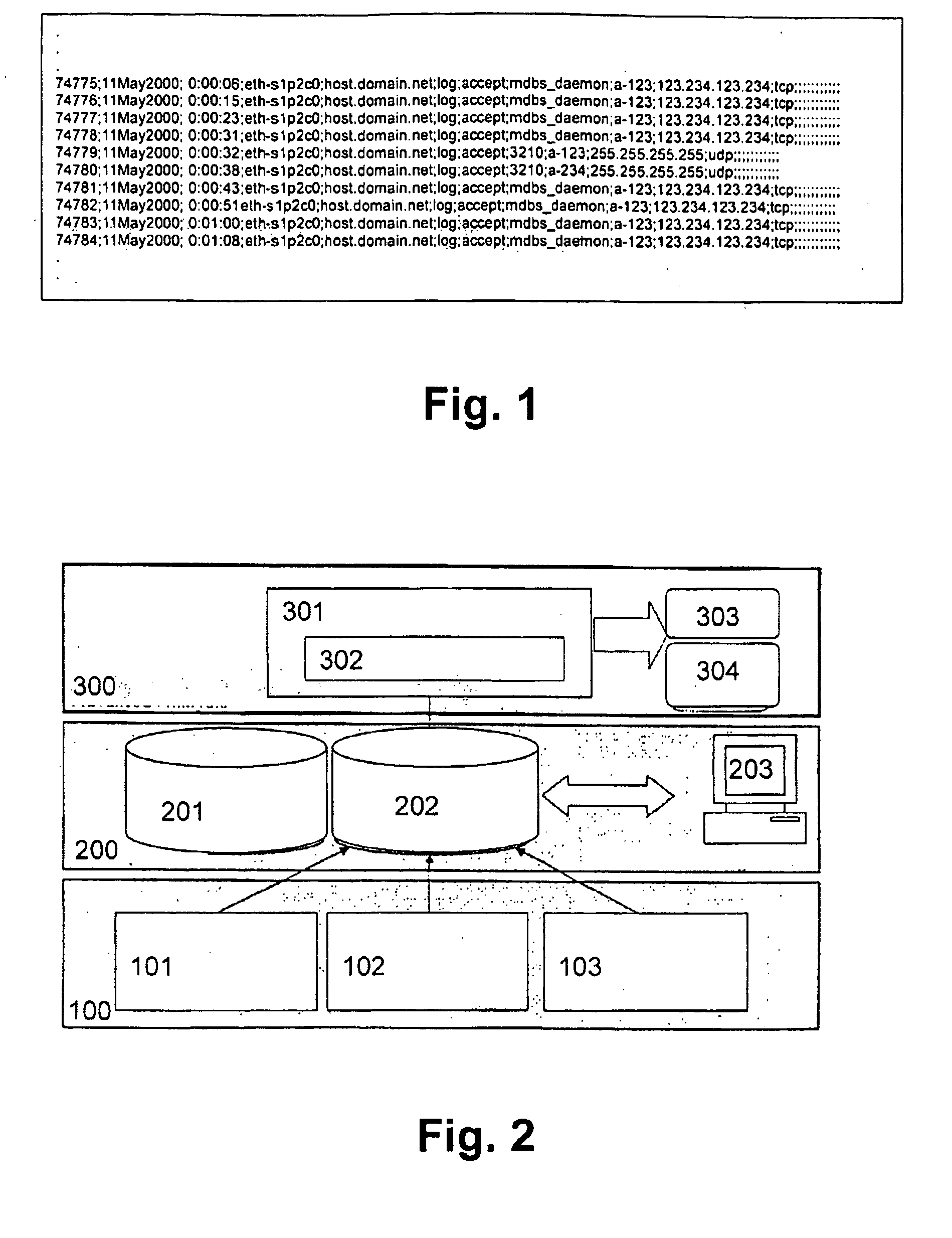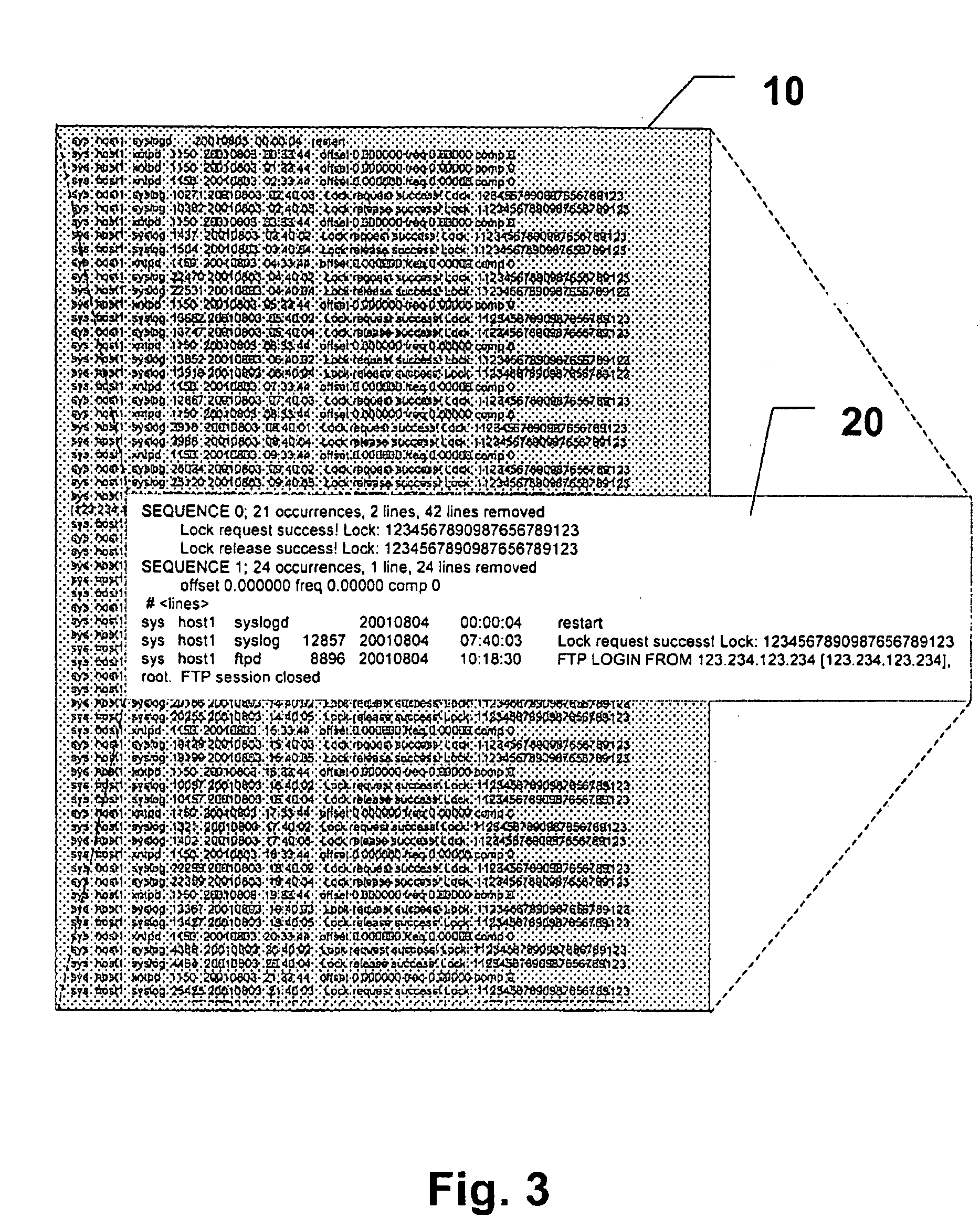Method and apparatus for compressing log record information
- Summary
- Abstract
- Description
- Claims
- Application Information
AI Technical Summary
Benefits of technology
Problems solved by technology
Method used
Image
Examples
Embodiment Construction
[0048] The first and second preferred embodiments will now be described on the basis of a security monitoring system as shown in FIG. 2.
[0049]FIG. 2 shows a security monitoring structure for monitoring a communication network or own processes of a network operator based on event logs in addition to event counters, wherein data records are collected in log data files. In particular, the structure consists of data sources 100 which may consist of information gathering network activity probes of a log manager, and which could be file system integrity system scanners or file system integrity checking agents, programs, systems, modules or the like, network probes of logging functions of a data communication network equipment, a firewall or a gateway of a Virtual Private Network (VPN), or network element probes of a user activity logging function, a file system integrity function, or a system scanner function. The data records obtained from the data sources 100 are supplied to data repos...
PUM
 Login to View More
Login to View More Abstract
Description
Claims
Application Information
 Login to View More
Login to View More - R&D
- Intellectual Property
- Life Sciences
- Materials
- Tech Scout
- Unparalleled Data Quality
- Higher Quality Content
- 60% Fewer Hallucinations
Browse by: Latest US Patents, China's latest patents, Technical Efficacy Thesaurus, Application Domain, Technology Topic, Popular Technical Reports.
© 2025 PatSnap. All rights reserved.Legal|Privacy policy|Modern Slavery Act Transparency Statement|Sitemap|About US| Contact US: help@patsnap.com



